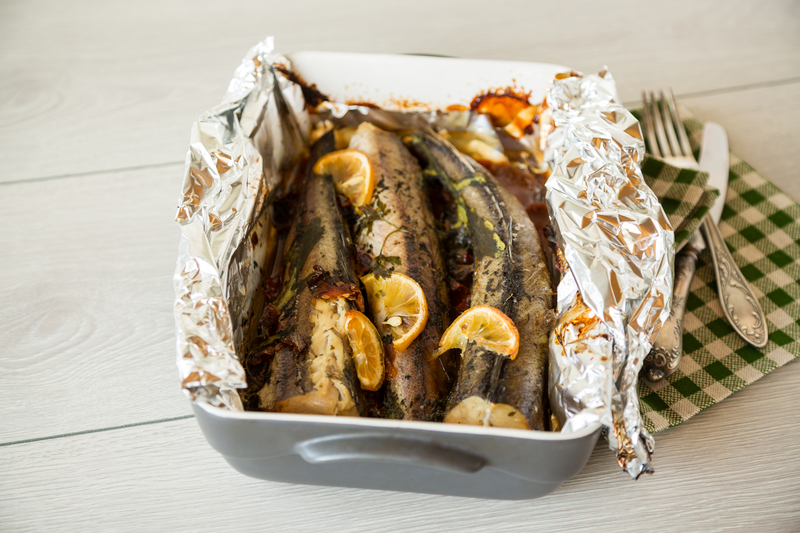 Baking fish is a healthy and delicious way to prepare this protein-packed delicacy.
Baking fish is a healthy and delicious way to prepare this protein-packed delicacy.
Whether you’re a seasoned home cook or just starting out, you may have wondered whether it’s necessary to turn fish over while baking.
In this article, we’ll explore the ins and outs of baking fish, including the question of whether or not to flip it over during the cooking process.
Let’s dive in!
The Basics of Baking Fish
Before we delve into the question of flipping, let’s establish some fundamental principles of baking fish:
- Temperature Matters
Preheat your oven to the recommended temperature.
Generally, fish is baked at temperatures ranging from 350°F to 450°F (175°C to 230°C), depending on the recipe.
This ensures even cooking and a nicely browned exterior.
- Choose the Right Fish
Different types of fish have different textures and moisture levels, which can affect how they should be baked.
Delicate fish, like sole or tilapia, cook quickly and may not require flipping, while thicker cuts like salmon or cod benefit from a flip to ensure even cooking.
- Season and Oil
Season your fish with your choice of herbs, spices, and a drizzle of olive oil or melted butter.
This enhances flavor and helps prevent the fish from sticking to the baking dish.
- Baking Time
The cooking time for fish varies depending on its thickness and the oven temperature.
As a general rule, aim for about 10 minutes of cooking time per inch of fish thickness.
The Flip Dilemma
 Now, let’s tackle the pressing question: Do you need to turn fish over when baking?
Now, let’s tackle the pressing question: Do you need to turn fish over when baking?
The answer depends on several factors:
- Fish Thickness
Thicker fish fillets or steaks often benefit from flipping during baking.
Turning the fish halfway through the cooking time ensures that both sides cook evenly.
If you’re working with a thin fillet, like flounder or sole, flipping may not be necessary as they cook through quickly.
- Crispy Skin
If you’re baking a fish with the skin on, flipping it can help achieve a crispy, golden-brown skin on both sides.
The skin-side-down cooking allows the skin to get direct contact with the hot baking dish, resulting in a delightful texture.
- Presentation
In some cases, you might want to flip the fish for presentation purposes.
This is particularly true if you’re serving the fish fillet skin-side up, as it can be more visually appealing.
- Basting and Flavor
Flipping the fish allows you to baste it with any seasonings, oils, or sauces in the baking dish.
This helps infuse the fish with more flavor and keeps it moist throughout the cooking process.
Exceptions to the Rule
While flipping fish during baking is generally a good practice, there are exceptions.
Delicate fish like sole, flounder, or haddock may not require flipping, especially if they are thinly sliced or rolled with stuffing.
Overturning such delicate fish can result in them falling apart.
Furthermore, if you’re using a baking method that encases the fish in foil, flipping may be unnecessary.
This Reynolds Wrap Aluminum Foil excels at various tasks, such as lining sheet pans for effortless cleanup, wrapping food to preserve its freshness, and covering dishes to maintain warmth.
You can also get creative by crafting foil packets to lock in flavors and juices when baking.
The fish cooks gently in its own steam, eliminating the need for direct flipping.
Bottom Line – Do You Turn Fish Over When Baking?
 In the world of baking fish, the decision of whether or not to turn it over depends on the type of fish, its thickness, your desired presentation, and the cooking method you’re using.
In the world of baking fish, the decision of whether or not to turn it over depends on the type of fish, its thickness, your desired presentation, and the cooking method you’re using.
As a general guideline, thicker fillets and those with skin benefit from flipping, while delicate and thinner cuts may not require it.
Remember that practice makes perfect, and with experience, you’ll become more adept at determining when to flip your fish for the best results.


